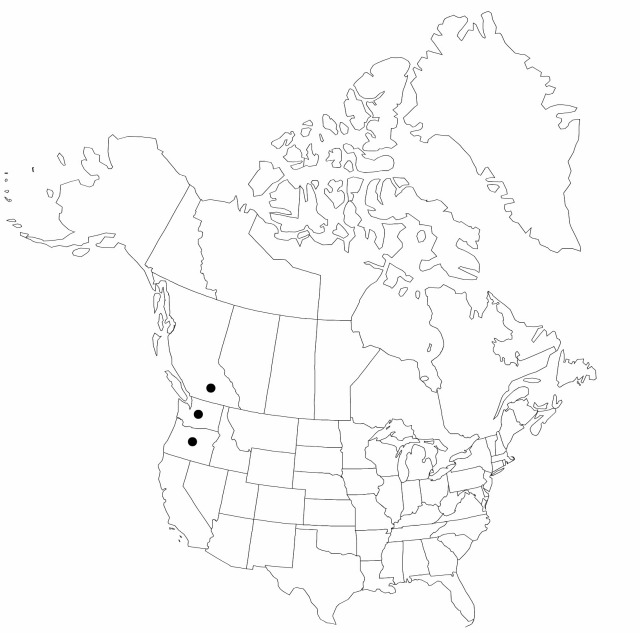Carex interrupta
Linnaea 40: 432. 1876.
Plants not cespitose. Culms obtusely angled, 20–75 cm, glabrous. Leaves: basal sheaths redbrown; sheaths of proximal leaves glabrous, fronts lacking spots and veins, entire, apex U-shaped; blades 3–5 mm wide. Proximal bract subequal to inflorescence, 2–3 mm wide. Spikes erect; proximal 4–7 spikes pistillate, 4–9 cm × 3–4 mm, base attenuate; terminal 1 (–2) spikes staminate. Pistillate scales redbrown or black, shorter than or equaling perigynia, apex acute, awnless. Perigynia ascending, olive-green, veinless, distended by and tightly enclosing achenes, ellipsoid or obovoid, 1.5–2.1 × 0.9–1.4 mm, dull, apex rounded, glabrous; beak green, 0.1–0.3 mm, orifice oblique. Achenes not constricted, dull. 2n = 68.
Phenology: Fruiting Jul–Aug.
Habitat: Sandy soils along rivers, occasionally wet meadows
Elevation: 0–600 m
Distribution

B.C., Oreg., Wash.
Discussion
Carex interrupta, an uncommon species, is distinguished by the very small, green, glabrous perigynia distended and often split by the developing achenes. Relationships of the species with other members of the section are not clear; it shares distinctive characteristics with C. torta and C. endlichii, the next two species.
Selected References
None.
Lower Taxa
"shortened" is not a number.
